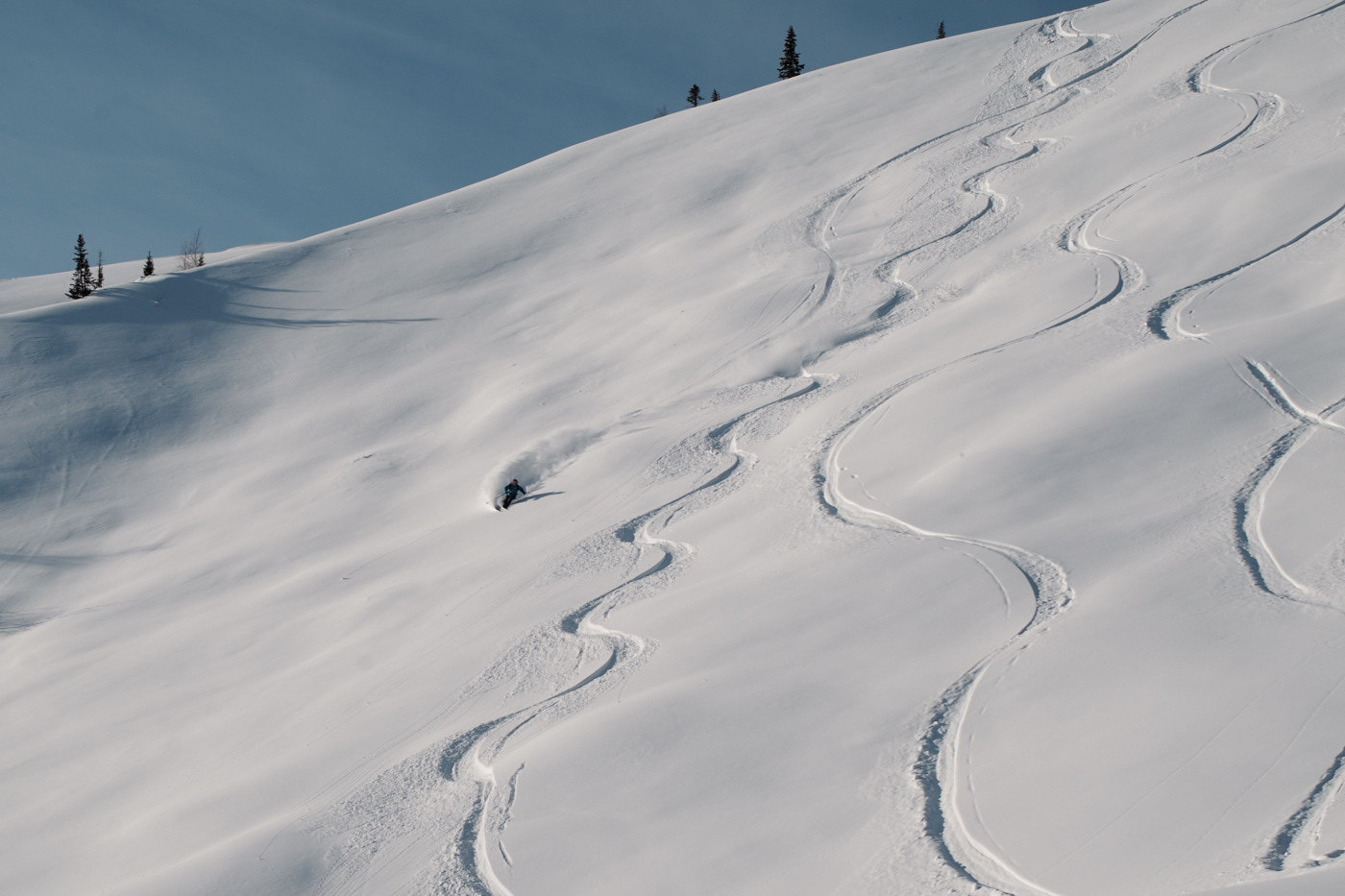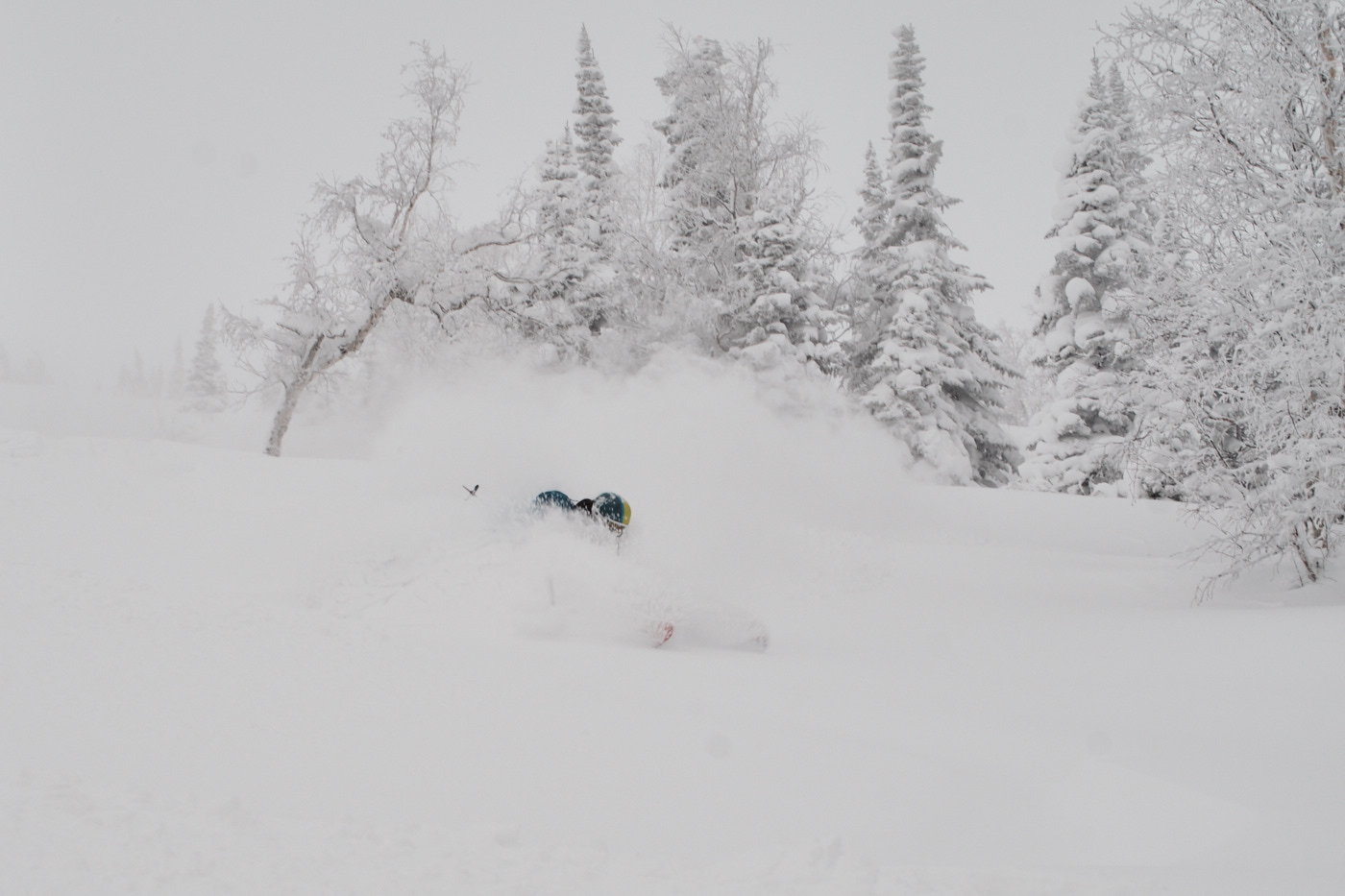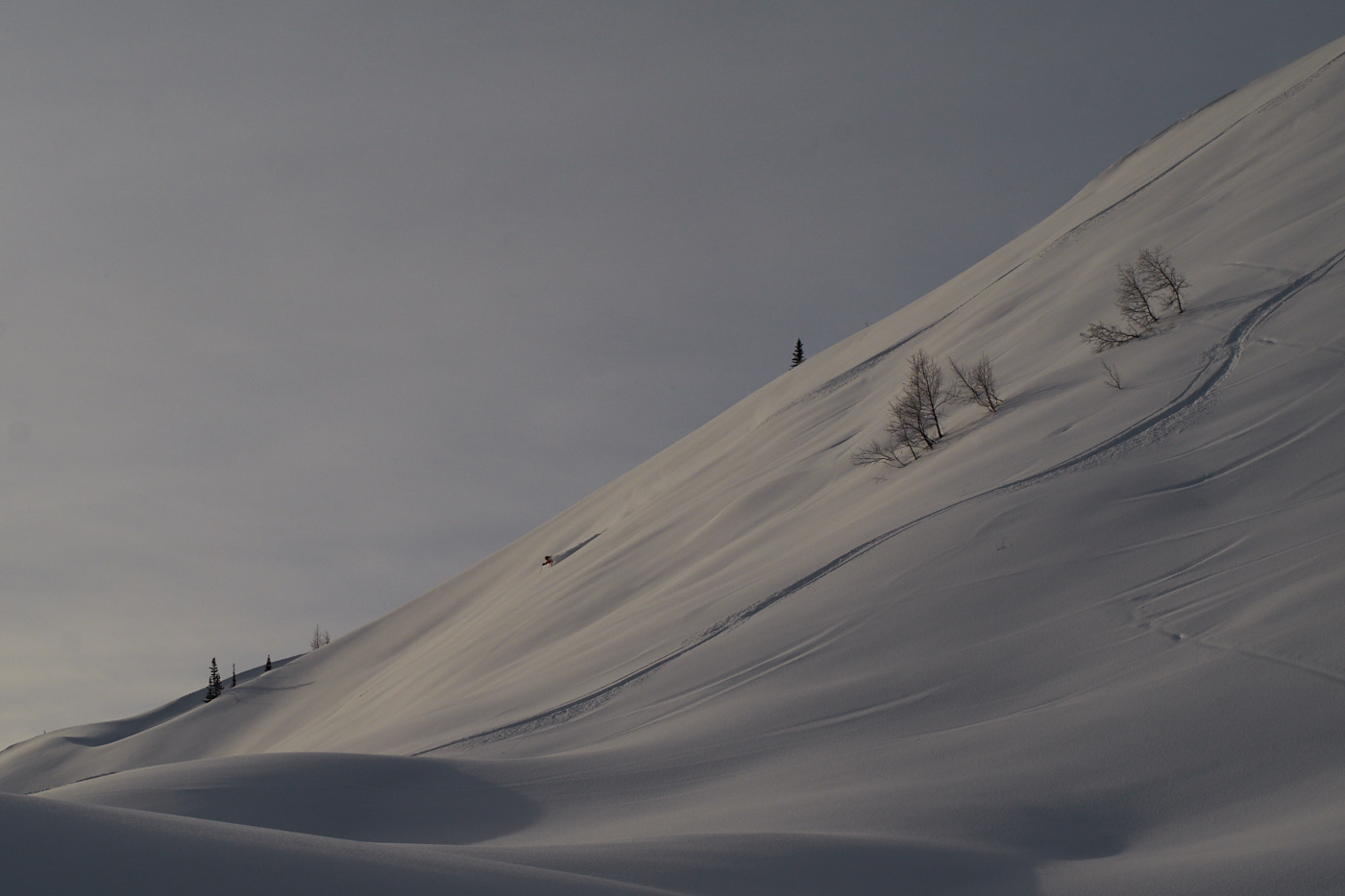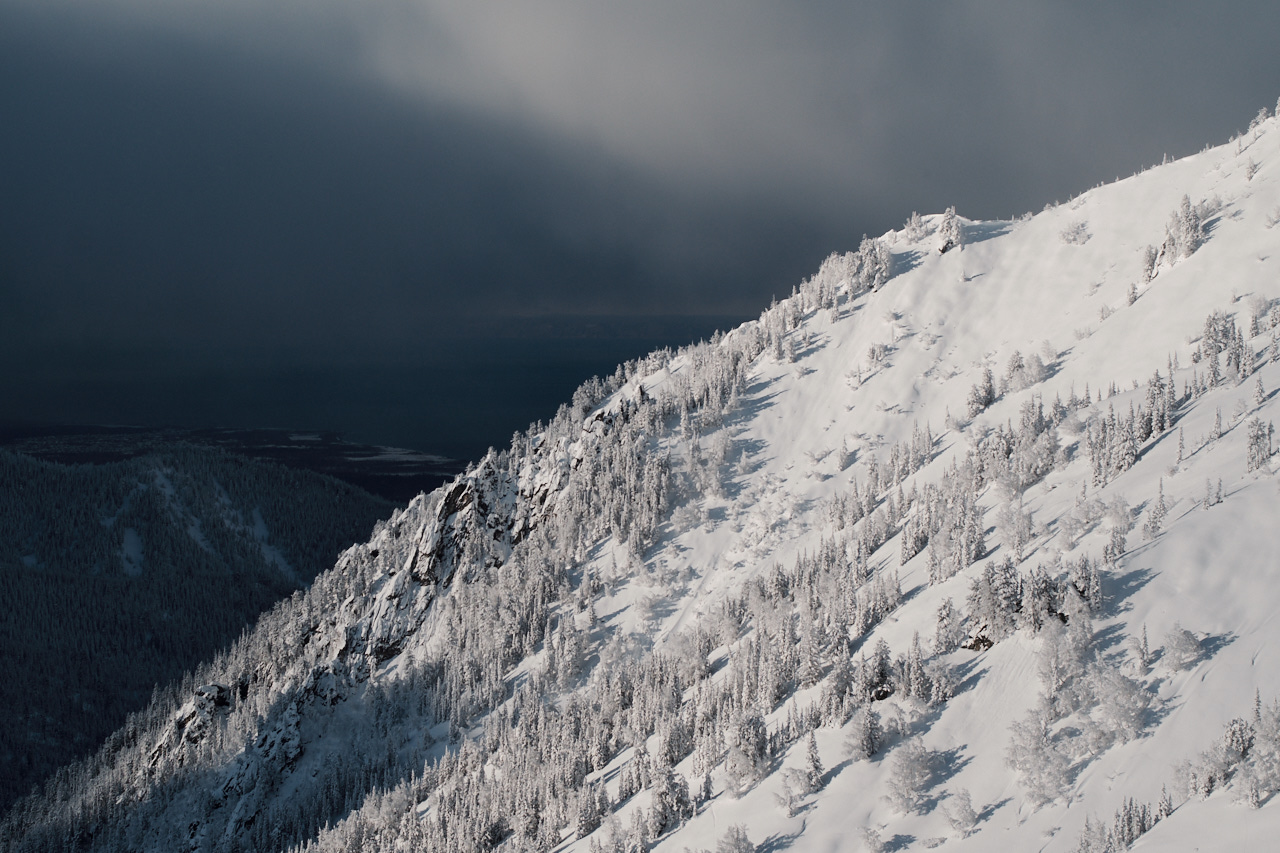Mamay/Siberia avalanche and skiing conditions
Mamay, Khamar Daban, Lake Baikal, Siberia (Russia)
I skied in the Mamay area close to Lake Baikal, Siberia (Russia) between 25 Nov – 8 Dec together with ACMG Ski Guide Grigory Mintsev and RMGA Ski Guide Anna Khankevich. During ski touring and the heli-ski training prior we found a widespread melt-freeze crust (MFcr), located mid-pack, 30-70 cm down, on E-S-W aspects. This crust had formed earlier in November, and we refer to it as November MFcr.
The first week was characterized by a relatively low snowpack of just over 1 m to 1.5 m on average. Skiing quality was excellent on SE, E and W aspects, however. North aspects were generally quite wind-effected and hard from strong N winds. Where the snowpack was shallow (1m or less), we could find a facet layer mid-pack that was reactive in CT tests (medium to hard RP and SP results). We could also find a facet layer between an older crust near the ground and a widespread basal ice layer.
Towards the end of the first week, a warm and subsequent cold front brought new snow, followed by very cold temperatures in the range -20º C to -30º C between 3 to 6 Dec, and continued snowfalls. The snowfalls were accompanied by NW-W winds and occasional S-SE winds. In total, about 50 – 70 cm of new snow fell over these days. This new snow generally bonded quickly despite chilling temperatures and provided excellent skiing.
Wind-effect and windslab formation varied strongly. Where we skied around Mamay – Myasnoy and Kedrovy E aspects - we found little to no windslab formation at TL (treeline) and BTL (below treeline). Snow on other mountains around had visibly more wind-effect, particularly in the transition to alpine areas.
In regard to the November MF crust: Where we skied in the Mamay area we could not find notable faceting and reactivity around that crust. Its presents kept our route choices conservative in open, unsupported terrain. The heli-ski groups observed a natural avalanche cycle on facet layers around that November crust on 8 Dec. after the storm cycle in the surrounding Valunna and Upper Mamay areas, highlighting the strong spatial variability between drainages in the Khamar-Daban mountain range.
When we left on 9 Dec, we rated the avalanche hazard TL/BTL 2/2, with the avalanche problems being windslabs at TL, facet layers mid-pack and near the bottom in specific (shallow) areas, and the widespread, stubborn to unreactive Nov. MFcr on E-S-W aspects.
The hazard rating from the heli-skiing program for Valunna and Upper Mamay was in contrast ALP/TL 3/3, due to the activity on the Nov. MFcr + facet layer.




